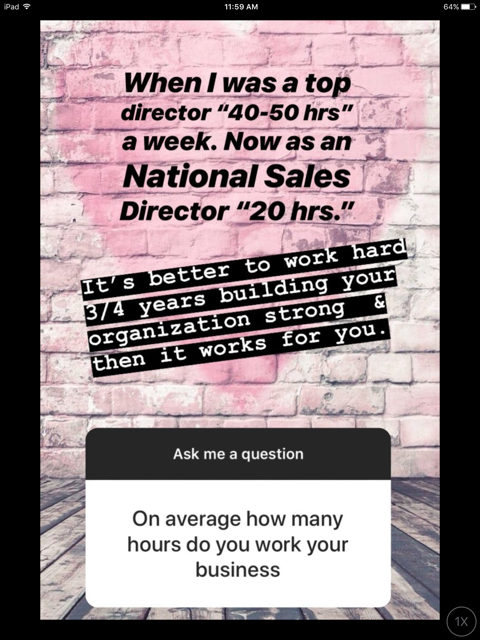
Mary Kay Is Like Corporate America (No, It’s Not.)
One of the most common defenses of Mary Kay, and multi-level marketing in general, is the tired old comparison to corporate America.
“You know,” they say, “every company is like a pyramid. Just a few people at the top make the big bucks, while the rest work for peanuts.”
The logic sounds familiar: In a typical company, the CEO, VP, and department heads earn the most. Everyone else does the grunt work and collects a modest paycheck. Mary Kay wants you to believe it’s no different. The story goes like this: Work hard, climb the ranks, and you too can earn the big commissions, the pink car, the crown, the dream life. And unlike corporate America, where all the top roles are already taken, you can start your own company and be the boss.
The comparison even stretches into sports. Thousands of kids play, a handful go pro, and the best of the best make the big money. Sounds familiar, right? So if only a small percentage make it to the top in Mary Kay, that’s just life. Survival of the fittest.
Except, that argument falls apart the moment you apply actual business logic.
In corporate America, employees don’t pay to keep their jobs. The receptionist at Honda doesn’t have to buy a car every month to stay on payroll. A point guard in the NBA doesn’t fund his salary by buying jerseys and nachos for the team. If a regular company required employees to buy thousands of dollars in inventory to stay employed, that would be a scandal.
And yet, that’s exactly how Mary Kay operates.
Consultants are pressured to order product, often far more than they can realistically sell, to meet quotas that are disguised as “minimums.” They are told to “invest in inventory” to earn commissions and prizes and to stay active in the company. The actual end customer is often irrelevant. Corporate doesn’t care who uses the product, as long as someone is swiping a credit card. More often than not, that someone is the consultant herself.
This is the part no one wants to talk about. Mary Kay isn’t measuring real retail sales to people outside the company. They are not tracking customer satisfaction, repeat buyers, or how much product sits aging on consultants’ shelves. They are tracking orders made by consultants. That is all. And most of those orders are placed by consultants who are just trying to stay in the game.
So no, Mary Kay is not “just like a corporation.”
It is a company where the revenue comes from the sales force, not outside customers. Where success is tied not to performance, but to how much you can buy and convince others to buy. Where your income depends not on selling lipstick, but on building a downline of women who order more than they can sell.
Next time someone says, “All companies are pyramids,” ask if their employer pays them based on how much company product they personally buy and store in their garage. If the answer is no, then maybe Mary Kay isn’t such a normal business after all.





 Visit the
Visit the
The other stark difference is in the roles of the participants. In real corporations, there are many different roles. Some work in management, others in product development, and even others in marketing, human resources, sales, purchasing, payroll, facilities, IT etc. Only certain specific roles have multiple people doing the same job, and there is a limit to the number in that role.
In every MLM downline, all participants have these exact same rolls:
– Ordering (mandatory)
– Recruiting (optional)
– Selling (optional)
One may wonder why there is no limit put on the number of folks doing the exact same job in MLM, until you realize every single one of them is ordering.
The folks in the sales force are the primary customer in every MLM. No outside sales necessary!
The *only* thing mandatory..
My husband works at a ford dealership. He drives a Honda. He says few people there actually drive fords. By MK logic, all of those people are out of a job.
“Only certain specific roles have multiple people doing the same job, and there is a limit to the number in that role.”
Well, that is the inherent problem with MLM and why it is doomed by design. They place no limit whatsoever on the number of salespeople so the saturation happens almost immediately, and they still keep signing on more salespeople. Even the aforementioned Ford dealership in the other reply to your post limits the number of salespeople they have at any given time, and with good reason. Hell, even in the old communist world, they still placed some limits on the number of people in different roles at the various government companies, even if they didn’t let supply and demand dictate who should have been hired and fired (and generally people couldn’t be fired). MLM and the salesforce it has is essentially like a train on autopilot going at top speed toward a brick wall (the wall is symbolic for point of saturation) with no brakes. Hence, 99%+ of the people involved are doomed to fail and only the people who got in and got out early make any money.
A real company wants a finite number of managers, product developers, accounts, salespeople, etc–preferably as low a number as possible, in order to keep expenses low. What DO they want an ever-expanding, even limitless number of? CUSTOMERS.
Yes, and companies like grocery stores ( that front-load) or car dealerships (as Salty’s husband) know how much product they have on the shelf, and how much they sell. Ford doesn’t order more bright yellow Ford Fiesta’s if no one is buying them. Or family sized cans of LIma Beans, if no one is buying them.
MK does not keep track of inventory SOLD. Only inventory PURCHASED.
I just.. I really want to know.. genuinely.. when a consultant finds her way here to read this, how do you still support the company? As mentioned by DJ above, the only thing mandatory is ordering. You know deep down you’re not selling it all. “But I will next month.” No.. no you won’t. No salt here, just concern. Don’t place an order at month end just to stay in the game. The Lord will provide another way for you just like He did me.
“If a regular company required employees to buy thousands of dollars in inventory to stay employed, that would be a scandal.”
Consultants read and even post on this website from time to time, but like any cultish type organization, the upper leadership tries to pull the wool back over their eyes and tell them this site is all BS, and all those on here are a bunch of failed MK consultants who just didn’t work hard enough or believe in themselves. Yet whenever a supposedly successful and hard working MK consultant who clearly believes in themselves and posting here is asked how much money they made last year (noting that they are posting here anonymously and nobody has to know who they are), the response is always silence.
There will always be cults and MLM, but thanks to the Internet, I think the power and dominance they once had has been considerably weakened, now that just about anybody can read about what goes on with them.
I no longer work for corporate America. I work for the government, which is its own bloated bureaucracy of nonsense at times to most of the times. However, the comparisons between have a lot of similarities.
We have high-up leadership, and yes, those people rotate at regular intervals. We have many workers in a host of areas: clinics/outpatient, IT, systems engineering, inpatient care, housekeeping/environmental services, HR, admin, and security—just to name a few. Not everyone at the hospital is a healthcare provider. As DJ mentioned, there are limits to the number of people in each role.
My paycheck is not dependent on the number of corpsmen or nurses I train, the results of QI/PI projects, or the number of patients I see. (I am eligible for bigger performance bonuses for these things, especially when a project saves money.) In fact, no one’s paycheck depends on a downline doing anything, and no one’s paycheck depends on the dollar amount of supplies we order each month.
Yeah, corporate America has its issues, yet it’s infinitely better than what an MLM can offer you.
In MLM, crucially, every “employee” (lol) is guaranteed to spend money, but there’s no guarantee any of them will make any money at all, let alone enough simply break even.
To hide this, everyone is told that any income at all is profit, conveniently leaving out the money spent. It’s like a credit card with cashback but the credit card bill doesn’t exist. But that bill is very real.
An actual business is more like a tree, with the owner or president as the trunk and various levels of the hierarchy making up the limbs and branches.
The thing about trees is that the area of all the cross sections at a given point of branching is equal to the cross section of the trunk, and ditto for the limbs and their own branches.
Furthermore, the leaves, which are what produce the fuel that powers the growth of the tree.
The trunk and big limbs (say, the Eagles football team and its star quarterback Jalen Hurts) might get the attention but without the supporting players and the medical staff and the trainers, right on down to the ticket takers and concession workers and the janitorial staff, not to mention the fans who buy tickets and merch there wouldn’t be a team.
On the other hand, remove the bottom level of a pyramid and you’ve got a shorter pyramid. Same structure, just smaller, like Bellame compared to Mary Kay.
And atop that pyramid, built to entomb his grandmother, MK’S goddess queen, Ryan Rodgers is sitting and thinking about all that nice stone that could be used for so many other things, and the gold covering the capstone must be worth 🤑…
Jalen Hurts! Roll Tide!
My vision of Ryan sitting at the top thinking “wow I would make so much more money if I didn’t have all these trips and AliExpress prizes to pay for” and the consultants drooling outside of corporate saying “he loves us he’d never hurt us!” as they’re also applying for government assistance because their grocery money goes to buying more product so they can stay in the game that they’ll never win. Husbands saying “where’d your commission check go?” “Well I needed $1800 to meet car production so I went ahead and ordered to prep for Christmas.. in March.” Meanwhile Ryan wanting all that in his pocket rather than cycled through production over and over. Maybe our MK friends we love to follow can get a job at the soon to be growing delivery department of corporate.
Those Cadillac EVs will make perfect delivery vehicles 😈
Also in corporate America, or the government, or any legitimate business where people are employed, employees aren’t required to pay for their own training!
Should have been waaaaay more red flags for me than it was
You get paid while training, and if it’s not local, they pay your travel costs. I had a lovely 2-week fully paid stay in Boston at the horrible J.O.B. Worked 8-5 with a long lunch, rental car if we wanted it, weekends off to explore the town.
Hmmm. down votes on some of the comments. Appears we are hitting a nerve.
MK peeps down voting, please read the archives, or any recent post.
I’d love for them to comment. Like, honestly hear their responses. I think it’s against the rules, but sometimes it would be interesting